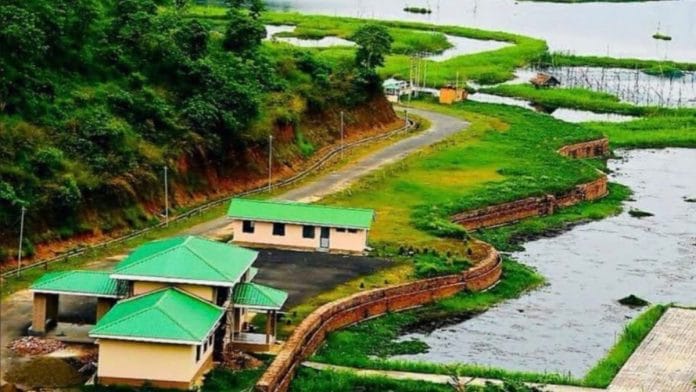New Delhi: Lakhela lake’s catchment area in Rajasthan’s Kumbhalgarh Wildlife Sanctuary has witnessed a surge in construction activity over the past decade, a survey conducted by the Council of Scientific and Industrial Research (CSIR)’s National Environmental Engineering Research Institute (NEERI) has revealed.
In a report submitted to the Supreme Court last week, NEERI presented the findings of its “change-detection study” of the eco-sensitive zone, indicating that the built-up portion in the lake’s eco-fragile area constitutes close to three percent of the total area of the catchment zone.
According to the report, the total catchment area spans approximately 13.662 square kilometres.
Under the River Conservation Zone (RCZ) Regulations, 2015, and the Environment Protection Act (EPA), construction activity is prohibited in the catchment zone to prevent pollution of the water body, reduce the risk of flooding in the region, and, in turn, avoid damage to the local ecosystem.
While the NEERI report says that the built-up portion constitutes about three percent of 13.662-square-kilometre catchment area, it also reveals that less than one percent of the zone is occupied by the water body, indicating “a minimal presence of water”. More than 44 percent of the total area comprises barren land, while agriculture is practised on 6.86 percent, suggesting moderate cultivation and farming activity around the water body. Vegetation covers approximately 45 percent of the land.
NEERI’s analysis of the lake’s submergence area showed that construction activity around the lake began after December 2010. “The analysis of the satellite data of the submergence area of the lake indicates that part of the submergence area has been replaced by built-up area in November 2019 and April 2023,” the report said.
The extent of the built-up area that has replaced the lake water can be accurately assessed through a professional surveyor, NEERI has submitted to the top court.
NEERI’s report is part of a pending case in the top court concerning unauthorised construction in the eco-sensitive zone of the Kumbhalgarh Wildlife Sanctuary in Rajasthan. The case relates to private constructions, including hotels and landscaped developments, in the fragile area.
Interestingly, one of the hotels in the area is a state government-owned property—Kumbhalgarh Yatri Niwas. The petition in the Supreme Court has raised concerns about violations of environmental regulations by these illegal buildings and their impact on the sustainability of the lake and its surroundings.
NEERI’s report confirms the existence of unauthorised structures in the catchment area, as highlighted in the petition before the top court. These findings could have significant implications for ongoing and existing projects in the region.
During last week’s hearing, a bench of Justices Abhay S. Oka and K.V. Vishwanathan sought the Rajasthan government’s input on NEERI’s report.
Representing the state, additional advocate general Shiv Mangal Sharma informed the court that all stakeholders would be consulted before submitting a final response. Taking note of Sharma’s submissions, the bench set a three-week deadline for Rajasthan to respond to NEERI’s report and scheduled 14 February as the next hearing date.
Speaking to ThePrint, Sharma said NEERI’s findings form the basis for ongoing deliberations about balancing ecological preservation with development needs in the sensitive area. “We shall look into the NEERI report and give a response.”
However, the counsel acknowledged that a Supreme Court decision based solely on the report’s findings could have far-reaching implications for ongoing construction projects in Kumbhalgarh’s eco-sensitive zones. “That’s why the court wants the state to step in.”
(Edited by Radifah Kabir)
Also Read: As SC Collegium considers proposal to tackle nepotism, how the bar views the possible move






